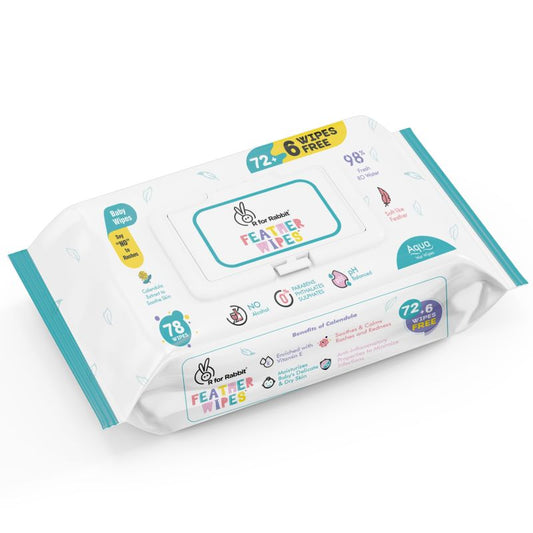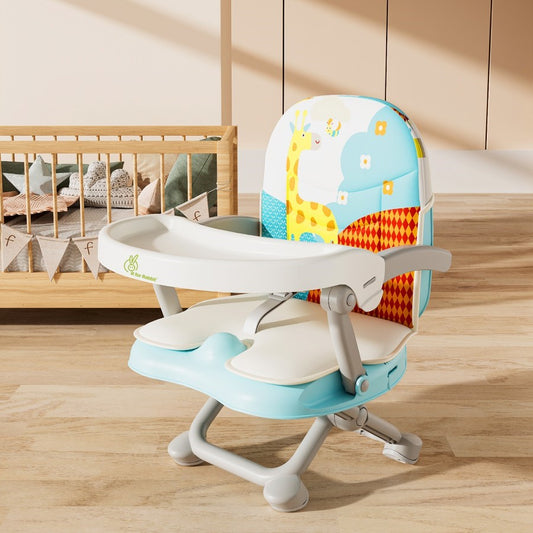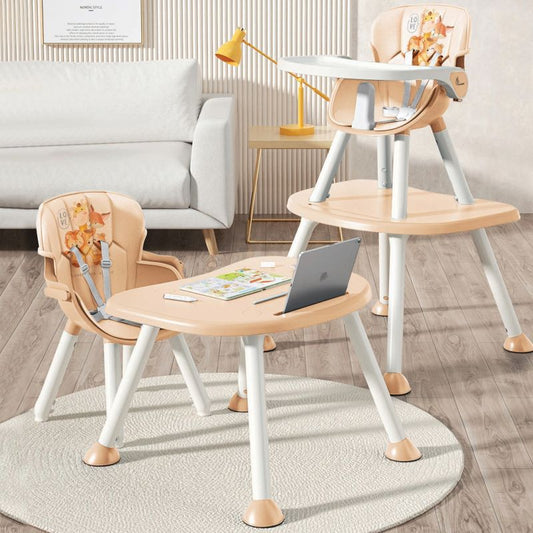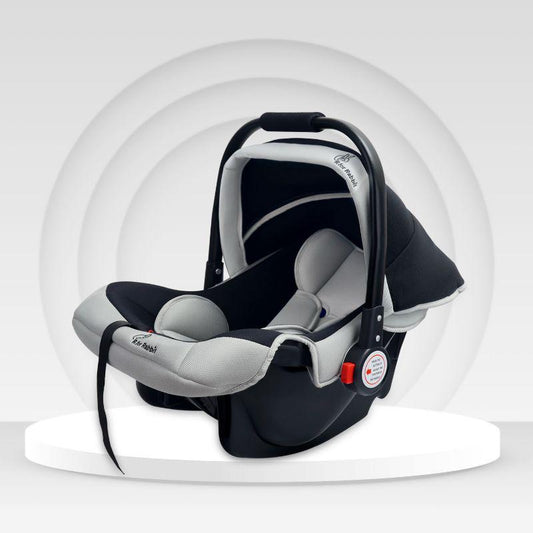Four Essential Baby Care Tips Every Indian Parent Should Know

Table of Contents
Everyone awaits the sight of the newborn, their coos, giggles, cuddles, and more. However, it takes a considerable effort not just to raise a little one but also to take care of them from the time they are born.
The sudden shift of their environment from a habitable one for their formation to the outside environment requires big adjustments. Baby care tips during such initial days are necessary for their overall development.
The four key areas of baby care tips for Indian parents include the process of birthing, circumcision, bathing, and the risk of SIDS.
This blog will provide all the essential baby care tips to ensure their healthy growth and development.
Bathing Your Baby: Splish, Splash, Tiny Baths!
Babies are born with a white, waxy coating on their entire body called vernix. This behaves like their natural moisturizer and also has an antibacterial shield that helps protect the baby from the sudden change of environment.
Fact: WHO has recommended waiting for at least 24 hours to give the first bathing to the baby.
Reasons:
- It is believed that skin-to-skin contact is more important than bathing them to help regulate their heartbeat, breathing, and security. This is because it helps in bonding.
- There has been a rise of almost 166% in successful breastfeeding by just delaying the bath by 12 hours after birth.
- Since newborns take time to adjust to their new environment, bathing them too soon could lower their sugar levels and also risk causing hypothermia due to the temperature transition.
Let us now discuss a few newborn bathing guidelines to make your journey a little easier.
When to Start Bathing?
One of the easiest ways to remember this is by S.H.I.E.L.D.
- Sponge baths: Always begin with sponge baths until the umbilical cord stumps off.
- Healing is prior: Let the umbilical cord heal, dry, and fall off naturally within 2 to 3 weeks.
- Infection prevention: The umbilical cord works like a Band-Aid. The cleaner and drier the area, the sooner it heals and falls off.
- Easy & gentle: It is always recommended to be gentle and easy on their sensitive skin while bathing them. This is to avoid scraping the vernix off that protects their skin.
- Less bath: This implies more protection. Twice or thrice a week is sufficient to keep them clean because they hardly make any movements.
- Delicate protection: They require delicate and gentle care by using mild, fragrance-free, and baby-friendly bathing products.
Caution: In case the umbilical cord does not fall off until 2 months, it is best to visit the healthcare provider as soon as possible.
Signs to consult the doctors
- Bleeds persistently as little blood is fine.
- Failing to heal exceeding 3 weeks signifies a problem in the immune system.
- Inflammation, redness, and warmth to touch indicate infection.
- An unexplained high fever of around 100.4 degrees Fahrenheit or higher causes discomfort.
- Formation of a soft bulge near the belly button called an umbilical hernia.
- When the region remains wet despite drying, signifying an issue in the connection between the bladder and the umbilicus of the baby.
Bathing Techniques
Bathing is considered one of the most important bonding activities. Here are some important newborn bathing guidelines to help you with the necessary care.
- Ensure to use a clean and soft cloth to wipe the baby’s skin. Also, be very gentle and avoid scrubbing at all costs.
- Begin bathing them from the face first. Then slowly progress towards the entire body by thoroughly cleansing the skin folds like armpits, neck, etc.
- The weight of the baby’s head is big and heavier. Therefore, it is always recommended to hold the baby’s head with one hand while bathing with the other.
- Avoid bathing the baby directly from the faucets to avoid scalding or serious burns.
Tip: Sometimes talking or singing while bathing them also helps them feel comfortable and secure. Also, the best time to bathe them is when they are very calm and awake.
Caution: Avoid bathing them when they are drowsy or just after they are fed to prevent spit-ups.
Also Read:
- 8 Key Factors When Selecting Baby Bath Tubs in India
- Do’s and don’ts for you while you massage
- Ultimate Baby Bath Time Safety Checklist
Safety Measures
- Always ensure that the water is neither too hot nor too cold but lukewarm. Do an elbow test for the temperature.
- Ensure to bathe the baby in a baby bathtub, and the water should not be more than two inches deep. Also, the baby’s head should always be outside water.
- Babies cannot control their head and neck movement, which increases their risk of slipping while bathing. Therefore, it is always recommended to never leave the baby unattended at any cost.
- Newborns lose four times more heat than adults from the top of their heads. This implies that their bathing time must not exceed more than 10 minutes to prevent chilling.
- While washing the face, cover their eyes with your hands so that the suds flow outwards through your hands to protect their eyes.
- Always ensure to keep them comfortable and protected by immediately keeping them within a warm, soft towel following their brief bath session.
Tip: Newborns do not require any bathing toys. This is because water is enough brain stimulation for them, which helps them relax.
Fact: Most of the drowning deaths among kids under one year of age have occurred at home, in the bathtubs.
2. Cesarean Delivery: The VIP- Birthing Card To Infants!
Babies are born with a starter nutrition pack, which they derive from the placenta and then from the breast milk. This is the only antibody they require to strengthen their immune system during their initial years.
Also, the placenta acts as their source of nutrition inside the womb, and breast milk is considered their first vaccine.
This means that the mothers’ health is always linked to the baby in their initial years, making cesarean delivery recovery an important aspect of baby care in case of a c-section.
Understanding Cesarean Sections
A c-section is the process of delivering the baby through incisions in the mother’s abdomen and uterus. It is usually done when the vaginal delivery is considered unsafe.
Causes for C-section
- Improper delivery causes prolonged dilation or pushing despite the optimum cervix opening.
- When the baby shows signs of distress or is in an unusual position in the womb, causing a blockage of the birth canal.
- In case of more than one baby in the womb.
- Health concerns for both the mother and the baby.
- If the umbilical cord pinches, causing a lack of oxygen supply to the baby, or if it enters the birth canal before the baby, it is called umbilical cord prolapse.
- When the placenta separates from the uterine wall too soon.
What is Microbiome Makeover?
The vaginally delivered babies are exposed to the vaginal fluids that are beneficial to establishing a healthy gut microbiome and promote overall health in babies. In the case of a c-section, the babies are exposed to the vaginal fluids of the mother, also known as vaginal seeding.
Post-Operative Care for Mothers
Let us now understand some tips for post-operative cesarean delivery recovery in mothers.
- Ensure to move slowly but frequently to avoid developing any blood clots.
- Use a pillow as a support against your abdomen while coughing, sneezing, laughing, etc., to reduce the discomfort.
- Keep yourself well hydrated to encourage fast tissue repair and healing, milk production, and prevent constipation.
- Wearing a post-operative belly binder or back supporter helps ease the pain while moving around.
- Ask for assistance because you will need to stay at the hospital for at least 3 weeks, and the healing post-operation takes around 12 weeks.
- Keep the site of the incision clean and dry for faster healing.
Tip: The more the rest, the faster the healing.
Risks of C-section
Although a c-section is usually kept as the last resort during times of medical emergencies, certain mothers especially ask for them.
Therefore, it is important to understand all the possible risk factors associated with it to calibrate towards the right decision.
- Redness, inflammation, warm, or oozing pus at the point of incision.
- Heavy bleeding both during and after birth.
- An unexplainable high temperature or fever indicates infection.
- Sharp pain in the calf, leading to blood clots.
In case the pain does not subside with time and rather worsens, then it is best to consult the healthcare provider as soon as possible.
Impact on Baby Care
It is important to understand that cesarean delivery recovery might take time, which might impact the bonding or breastfeeding of the baby. A few repercussions include:
- Always keep the baby’s and your essentials within reach to avoid bending and straining too much.
- Use a pillow or a football against the abdomen to avoid putting pressure on the incision while nursing.
- Avoid lifting anything heavier than 11 to 12 grams until healed properly.
Tip: Baby care begins with mothers’ care, and therefore it is important for the mothers to not be careless about their health during baby care.
Also Read:
- C-Section Recovery: Best Exercises for Indian Moms
- 14 Post Delivery Tips: Essential Guide for New Moms in India
3. Circumcision: Snip-Snip Foreskin!
It is the surgical process to remove the foreskin, which is the front covering of the penis, owing to various cultural, religious, or medical reasons.
This is done either within the first few days after birth, during adolescence, or in adulthood, depending upon the circumstances, belief, and regional location of the individual.
For example, Judaism supports it on the eighth day after birth, Islam during infancy, African societies consider it a passage to manhood, Western societies do it for hygienic reasons, and Hindus generally do not actively practice it.
Although the surgery takes just 20 minutes, it requires a few days of rest in the case of children and around a week’s rest in the case of adults.
Let us discuss some circumcision care tips for infants.
Care After Circumcision
- Keep the area clean and dry by gently cleaning the area with warm water to prevent infection.
- Avoid using harsh soaps or wipes.
- Apply a thin layer of Vaseline petroleum jelly on the tip to avoid it sticking to the clothes or diaper. Also, opt for a loose-fitting diaper to avoid unnecessary friction or irritation.
- Let it fall off naturally and avoid pulling at it at all costs.
- Ensure to give sponge baths until it is healed and avoid submerging the baby into the water for a long time.
- Use pain relief or frequent breastfeeding to relax the children.
- Avoid sitting in positions that might cause pain or discomfort, like straddling toys like seesaws, rocking horses, jumpers, swings, etc.
Signs of Healing
The healing process includes a yellowish-white film over the wound and mild redness and swelling that reduce with time. Also, if the baby isn’t showing signs of discomfort by being overly fussy, it is a sign that healing is on track.
When to Seek Medical Advice?
Although circumcision heals naturally over time, it is best to keep a lookout for signs that demand immediate medical attention.
- Persistent bleeding that isn’t just a few drops.
- Bad odor or thick green/yellow discharge signaling an infection.
- The area worsens rather than gets better.
- An unexplainable fever.
- A baby not peeing for more than 12 hours is a clear sign of an emergency.
4. Sudden Infant Death Syndrome (SIDS): Prevention For Safe Sleep!
SIDS refers to the sudden or unexplainable death of an infant below the age of 1 year. Since this is associated with sleep, it is also known as “crib death.”
According to the research, there has been almost a 51% decline in the SIDS cases from 1990 to 2019. However, despite years of hard work, the main cause of death still remains unexplainable.
The risk of SIDS increases when the babies are placed upon their stomach or sideways while sleeping.
Let us now understand some SIDS prevention strategies to protect the babies.
Risk Factors
There are various risks associated with SIDS, which include
1. Sleep-Related: This includes sleeping on the stomach or sideways and on soft or loose bedding that has the potential risk of choking with blankets, pillows, stuffed toys, etc. This might further cause overheating and difficulty in breathing due to bed-sharing and increase the risk of suffocation in babies.
2. Biology-Related: Babies who are born with underdeveloped areas in the brain controlling the breathing and sleep-wake cycle, or premature or low-birth babies, and also those having a respiratory infection of some kind, are more susceptible to SIDS compared to others.
3. Environment-Related: Mothers who have given birth under the age of 20, exposure to smoke during and after pregnancy, short gaps between two pregnancies, and poor prenatal and postnatal care increase the risk of SIDS.
4. Season-Related: The maximum cases of SIDS occur between the ages of 1 and 4 months old, and most cases occur until 6 months of age and during the cold weather. This is due to various reasons like overheating, increased bed-sharing, poor ventilation during winters, etc.
Therefore, it is recommended for room sharing and not bed-sharing during the initial six months.
Preventive Measures
- Ensure to place the baby on their back to sleep.
- Use a firm mattress and avoid using very soft bedding to prevent suffocation.
- Avoid smoking in and around the baby.
- Avoid using long blankets that have the potential to choke the baby.
- Offer a pacifier to the baby during their nap time to reduce the risk.
- Ensure to keep the room temperature cool and comfortable for optimum melaonin production for them to sleep.
- Remember to have regular checkups of both the mother and the baby.
Also Read: Indian Sleep Training Methods to Get Your Baby Sleeping Through the Night
Conclusion
Understanding baby care tips for Indian parents is important to ensure a safe and healthy growth and development of the little one.
Therefore, it is very important to be mindful of certain things that could impact them throughout their lives.
Also, it is always recommended to consult your healthcare provider in case these signs worsen to avoid any unwanted circumstances.
As a caregiver, the welfare of the newborn should be the first priority. This is because only their healthy present would ensure their healthy future.















